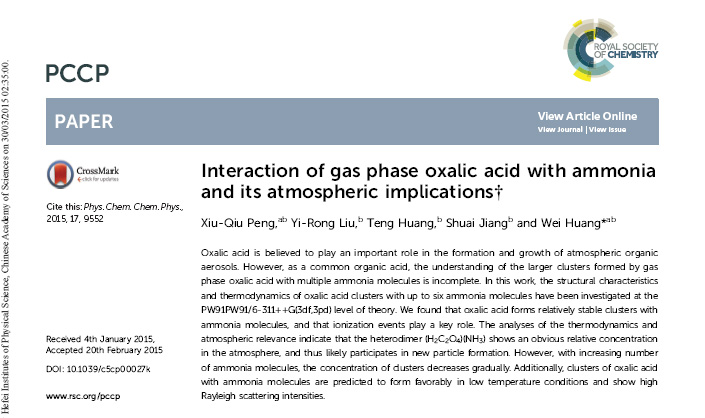Recently, new progress in the Interaction of gas phase oxalic acid with ammonia (H2C2O4)(NH3)n(n=1–6) and its atmospheric implications has been achieved by the research group of Prof. Huang Wei from Anhui Institute of Optics and Fine Mechanics (AIOFM) and University of Science and Technology of China(USTC). The finding has been published in Physical Chemistry Chemical Physics (2015, 17, 9552) .
Oxalic acid is believed to play an important role in the formation and growth of atmospheric organic aerosols. However, as a common organic acid, the understanding of the larger clusters formed by gas phase oxalic acid with multiple ammonia molecules is incomplete. In this work, the structural characteristics and thermodynamics of oxalic acid clusters with up to six ammonia molecules have been investigated at the PW91PW91/6-311++G(3df,3pd) level of theory. We found that oxalic acid forms relatively stable clusters with ammonia molecules, and that ionization events play a key role. The analyses of the thermodynamics and atmospheric relevance indicate that the heterodimer (H2C2O4)(NH3) shows an obvious relative concentration in the atmosphere, and thus likely participates in new particle formation. However, with increasing number of ammonia molecules, the concentration of clusters decreases gradually. Additionally, clusters of oxalic acid with ammonia molecules are predicted to form favorably in low temperature conditions and show high Rayleigh scattering intensities.
The study was supported by grants from the National Natural Science Foundation of China, the National High Technology Research and Development Program of China , and et al.
The article Link: http://pubs.rsc.org/en/content/articlelanding/2015/cp/c5cp00027k
